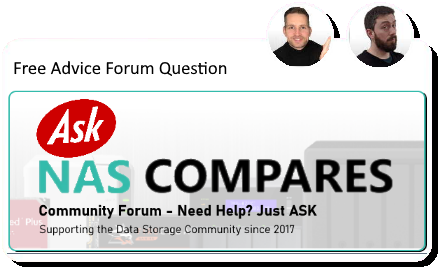Posts: 1,076
Threads: 1,077
Joined: Feb 2020
Reputation:
2
Hello, I was looking up some information on Terramaster set-up the other day and saw someone mention that you could install a single m.2 drive into the terramaster (F4-424) with no additional HDDs and do all of the TOS set-up and then come back and put in the drives and set up the storage pools later. I haven't seen anything else about that online especially with any kind of "this is how you do it". Before I try this with my unit (still waiting on ram and one of my m.2's to arrive) I was wondering if this is a. possible to do and b. a bad idea even if it is something I can do. I would like to use one m2 for the os and all apps and the other for caching. Thanks in advance for all the help you give to the community! Adam
Posts: 5,362
Threads: 2
Joined: Jun 2022
Reputation:
35
Thank you for reaching out and for your support of the community!
Regarding your TerraMaster F4-424 setup, it's indeed possible to install TOS (TerraMaster Operating System) on M.2 NVMe SSDs without additional HDDs. Users have successfully initialized their F4-424 systems using only M.2 SSDs for the OS and applications. This approach can enhance system performance due to the faster read/write speeds of NVMe SSDs.
TERRAMASTER FORUM
Steps to Install TOS on M.2 NVMe SSDs:
Install M.2 NVMe SSDs: Insert your M.2 NVMe SSD(s) into the designated slots on the F4-424.
Power On the NAS: Boot up the F4-424 with only the M.2 SSDs installed.
Initialize TOS Installation:
Use the TNAS PC application or access tnas.local via a web browser to detect your device.
Follow the on-screen instructions to install TOS.
Create Storage Pools: After TOS installation, you can set up storage pools on the M.2 SSDs. This setup allows TOS and applications to run directly from the SSDs, providing improved performance.
Add HDDs Later: Once your RAM and additional M.2 SSD arrive, you can install them and configure additional storage pools or use one M.2 SSD for caching purposes.
Considerations:
Data Storage: While running TOS and applications from M.2 SSDs offers speed advantages, it's common to use HDDs for primary data storage due to their larger capacity and cost-effectiveness.
SSD Caching: If you plan to use one M.2 SSD for caching, ensure it's configured appropriately within TOS to accelerate your HDD storage pool.
Potential Risks:
System Stability: Installing TOS on M.2 SSDs is supported, but ensure that your SSDs are compatible and in good health to prevent system issues.
Data Management: Properly manage your storage pools and volumes to avoid conflicts, especially when adding new drives.





